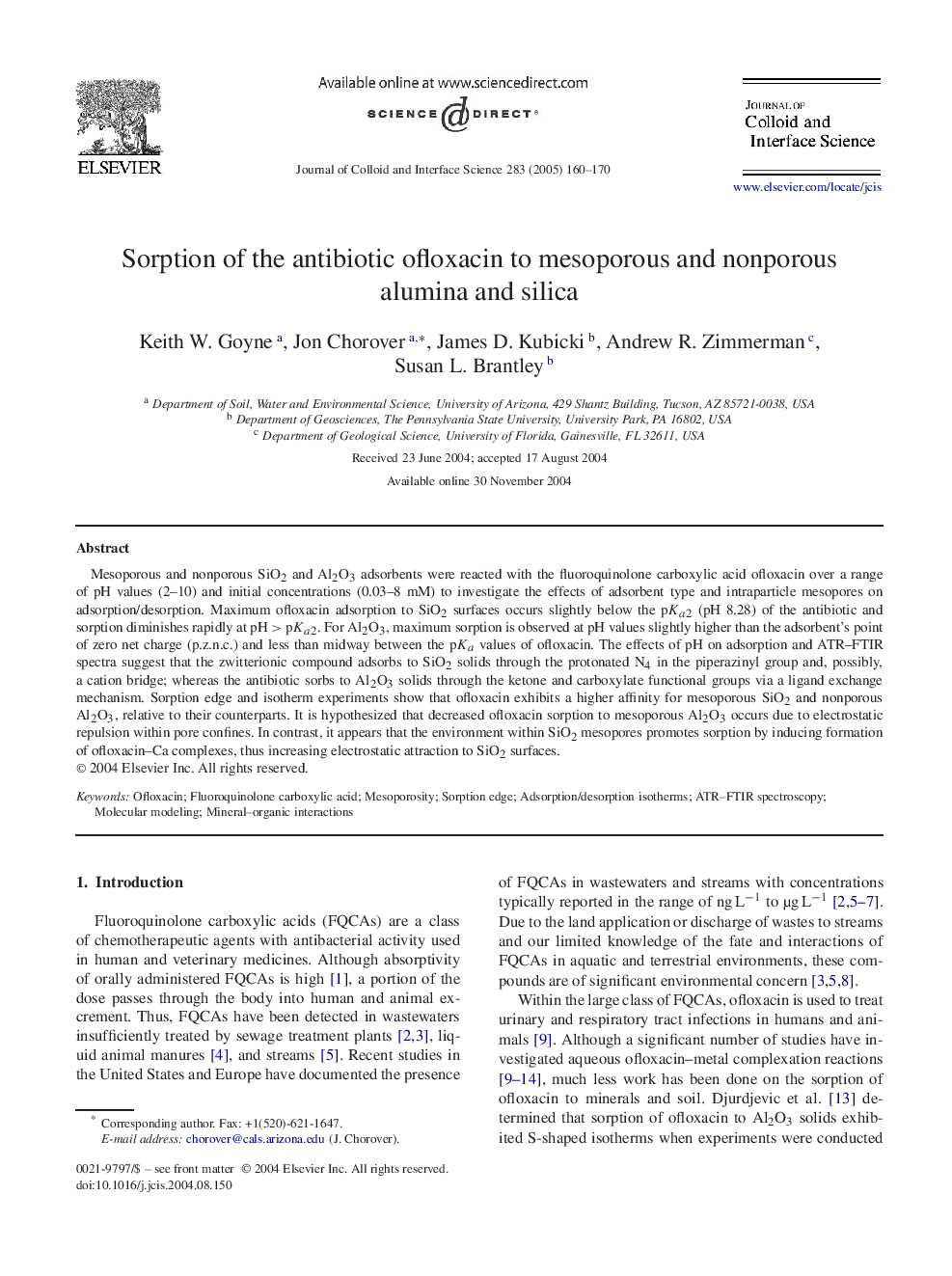| Article ID | Journal | Published Year | Pages | File Type |
|---|---|---|---|---|
| 10378470 | Journal of Colloid and Interface Science | 2005 | 11 Pages |
Abstract
Mesoporous and nonporous SiO2 and Al2O3 adsorbents were reacted with the fluoroquinolone carboxylic acid ofloxacin over a range of pH values (2-10) and initial concentrations (0.03-8 mM) to investigate the effects of adsorbent type and intraparticle mesopores on adsorption/desorption. Maximum ofloxacin adsorption to SiO2 surfaces occurs slightly below the pKa2 (pH 8.28) of the antibiotic and sorption diminishes rapidly at pHÂ >Â pKa2. For Al2O3, maximum sorption is observed at pH values slightly higher than the adsorbent's point of zero net charge (p.z.n.c.) and less than midway between the pKa values of ofloxacin. The effects of pH on adsorption and ATR-FTIR spectra suggest that the zwitterionic compound adsorbs to SiO2 solids through the protonated N4 in the piperazinyl group and, possibly, a cation bridge; whereas the antibiotic sorbs to Al2O3 solids through the ketone and carboxylate functional groups via a ligand exchange mechanism. Sorption edge and isotherm experiments show that ofloxacin exhibits a higher affinity for mesoporous SiO2 and nonporous Al2O3, relative to their counterparts. It is hypothesized that decreased ofloxacin sorption to mesoporous Al2O3 occurs due to electrostatic repulsion within pore confines. In contrast, it appears that the environment within SiO2 mesopores promotes sorption by inducing formation of ofloxacin-Ca complexes, thus increasing electrostatic attraction to SiO2 surfaces.
Related Topics
Physical Sciences and Engineering
Chemical Engineering
Colloid and Surface Chemistry
Authors
Keith W. Goyne, Jon Chorover, James D. Kubicki, Andrew R. Zimmerman, Susan L. Brantley,
